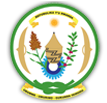RURAL SETTLEMENT
Rwanda’s Vision 2020 intends a proportion of at least 70 % of households living in rural areas to settle in integrated viable settlements and these planned settlements offers economic opportunities, favor rational land use and management and accelerate servicing with basic social economic and physical infrastructures in rural areas. One of the challenges that the Government intends to overcome is to assist households living in high risk zone from severely land slides and flooding.
In the 2015-2016 annual action plans, activities to mitigate this potentially threatening living situation of those households, earmarking funds for District governments to support making available plots for rural housing as well as basic construction materials for the construction of planned rural settlements. Part of the strategy is to improve the efficiency of the use of land for construction by assisting the layout planning before settling, facilitating the fabrication and use of local construction materials, and constructing “4-in-1-house” types (see figure).
There was establishment of Steering Committees at National, Province and District levels.
Besides this, rural settlements are being surveyed and monitored as part of a GIS based database, which shall also assist in the preparation of physical plans.
Unconventional Approach, This is a program of re-allocating households living in scattered settlements and high risk zones to integrated viable settlement(Imidugudu) .it is organized in three phases namely; planning and community mobilization phase, execution phase and monitoring, evaluation and report phase. At present, 362, 14 families have been identified to be Relocated country wide in all districts and Out of 70% EDPRS2 target, only 55.8% has been achieved according to EICV 4. The program was launched on 27th February2016 at National level during community work (Umuganda) in all districts by both National steering committees in collaboration with Local Government. Community sensitization and mobilization continues country wide.
Promotion of Local construction materials
In order to facilitate Rwandans living in rural areas the opportunity to accessible , sustainable and affordable local construction materials to accelerate housing sector in the country , the Government of Rwanda in collaboration with development partners such as SKAT ,Hydraform and others supports local authorities with the objective to support:
- People gaining home ownership by using low cost construction materials;
- House construction in planned rural settlement sites (imidugudu);
- Use of construction materials produced in the country;
- Skills development in the local construction sector.
In 2012, 416 block-making machines to fabricate compressed earth blocks and 100 tile-making machines to fabricate earth tiles were distributed to all districts and modern kilns using environmentally friendly fuel material were constructed to support the local production of low cost and standardized roof tiles and burnt bricks. So far, kilns were constructed in the Districts of Gasabo, Nyaruguru, Nyanza, Bugesera, Rusizi, and one under construction in Gatsibo. As a result, more than
130 houses have been constructed and 530 youth from different cooperatives were trained to use and maintain the distributed machines. More to that, 5 Hydraform Machine were given to WDA to support TVET programs and to train on stabilised earth blocks.
To achieve efficient management of these modern kilns and machines, Kilns are being privatized for ownership and management through private cooperative

 ENGL
ENGL KINY
KINY